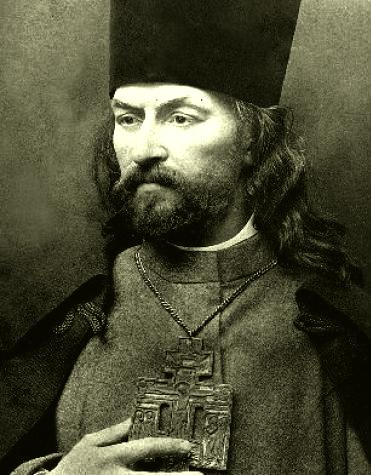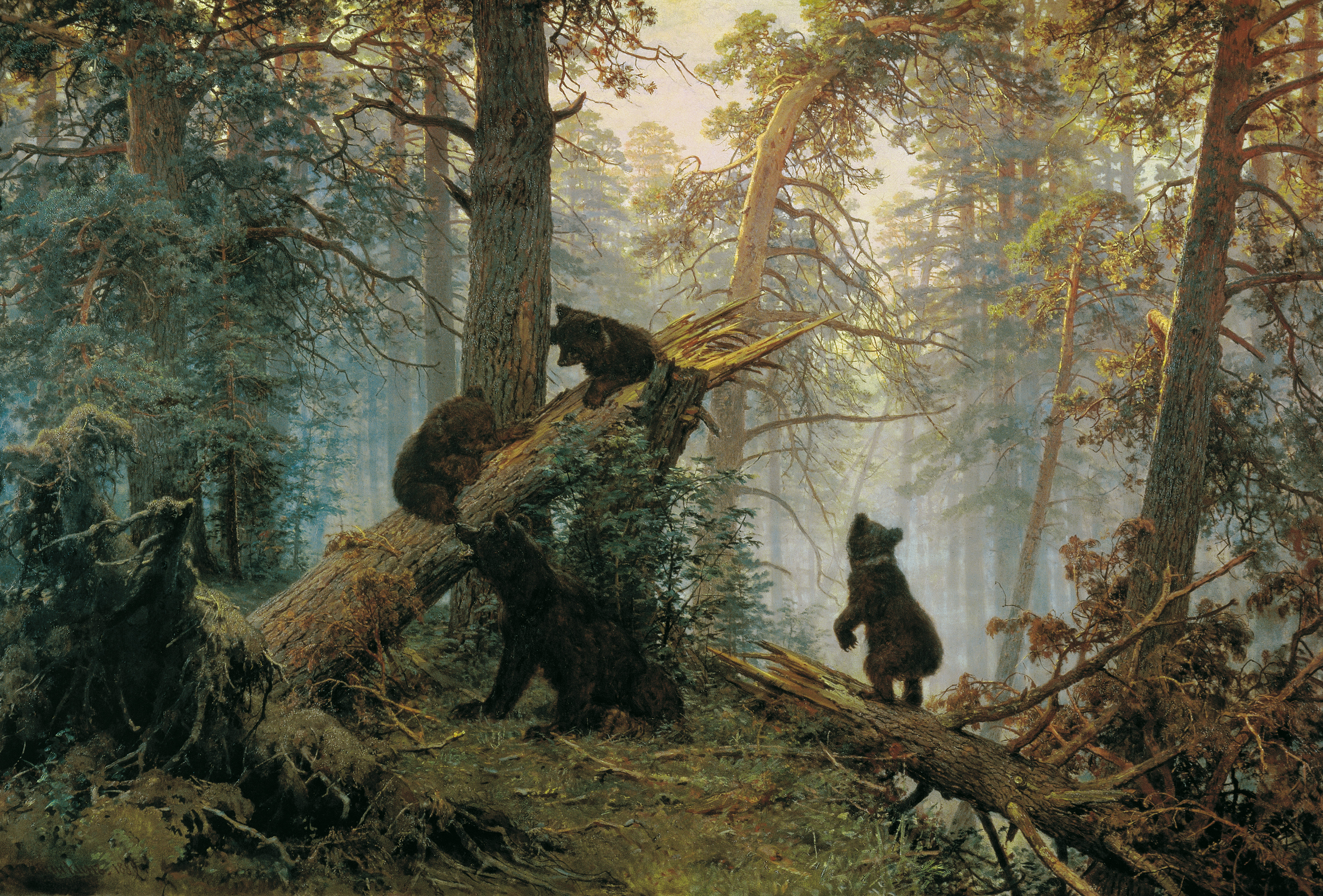|
Yefim Volkov
Yefim Yefimovich Volkov (Russian: Ефим Ефимович Волков; 4 April 1844— 17 February 1920) was a Russian landscape painter.Frida Roginskaya, ''List of members of the Peredvizhniki: Historical Essays'', Moscow, Искусство (1989) Biography His father was a feldsher and his family was poor. He was briefly employed by the Ministry of Justice. In 1866, he began to take drawing lessons at the "Imperial Society for the Encouragement of the Arts". He later studied at the Imperial Academy of Fine Arts and honed his skills by doing sketches from nature. In 1870, he received the title of "Free Artist" in recognition of his painting "View of Saint Petersburg and Vicinity". In 1878, he joined the "Association of Travelling Art Exhibitions" (Peredvizhniki) and presented annual displays of his work under their aegis. The death of his daughter in 1884 caused him several years of grief but, in 1888, he was finally able to make an extensive tour of Greece, Turkey, Eg ... [...More Info...] [...Related Items...] OR: [Wikipedia] [Google] [Baidu] |
Aleksandr Makovsky
Aleksandr Vladimirovich Makovsky (Russian: Александр Владимирович Маковский; 5 April 1869, Moscow – 26 October 1924, Saint Petersburg) was a Russian Realist painter and graphic artist; associated with the Peredvizhniki. Biography His father was the painter, Vladimir Makovsky, who gave him his first art lessons. His uncles, Konstantin and Nikolay were also painters.Brief biography @ Russian Paintings. In 1884, he enrolled at the , where he studied with |
Bloody Sunday (1905)
Bloody Sunday or Red Sunday ( rus, Крова́вое воскресе́нье, r=Krovávoe voskresénje, p=krɐˈvavəɪ vəskrʲɪˈsʲenʲjɪ) was the series of events on Sunday, in St Petersburg, Russia, when unarmed demonstrators, led by Father Georgy Gapon, were fired upon by soldiers of the Imperial Guard as they marched towards the Winter Palace to present a petition to Tsar Nicholas II of Russia. Bloody Sunday caused grave consequences for the Tsarist autocracy governing Imperial Russia: the events in St. Petersburg provoked public outrage and a series of massive strikes that spread quickly to the industrial centres of the Russian Empire. The massacre on Bloody Sunday is considered to be the start of the active phase of the Revolution of 1905. In addition to beginning the 1905 Revolution, historians such as Lionel Kochan in his book ''Russia in Revolution 1890–1918'' view the events of Bloody Sunday to be one of the key events which led to the Russian Revolution o ... [...More Info...] [...Related Items...] OR: [Wikipedia] [Google] [Baidu] |
Russian Male Painters
Russian(s) refers to anything related to Russia, including: *Russians (, ''russkiye''), an ethnic group of the East Slavic peoples, primarily living in Russia and neighboring countries *Rossiyane (), Russian language term for all citizens and people of Russia, regardless of ethnicity *Russophone, Russian-speaking person (, ''russkogovoryashchy'', ''russkoyazychny'') * Russian language, the most widely spoken of the Slavic languages *Russian alphabet *Russian cuisine *Russian culture *Russian studies Russian may also refer to: *Russian dressing *''The Russians'', a book by Hedrick Smith *Russian (comics), fictional Marvel Comics supervillain from ''The Punisher'' series *Russian (solitaire), a card game * "Russians" (song), from the album ''The Dream of the Blue Turtles'' by Sting *"Russian", from the album ''Tubular Bells 2003'' by Mike Oldfield *"Russian", from the album '' '' by Caravan Palace *Nik Russian, the perpetrator of a con committed in 2002 *The South African name for a ... [...More Info...] [...Related Items...] OR: [Wikipedia] [Google] [Baidu] |
19th-century Painters From The Russian Empire
The 19th (nineteenth) century began on 1 January 1801 ( MDCCCI), and ended on 31 December 1900 ( MCM). The 19th century was the ninth century of the 2nd millennium. The 19th century was characterized by vast social upheaval. Slavery was abolished in much of Europe and the Americas. The First Industrial Revolution, though it began in the late 18th century, expanding beyond its British homeland for the first time during this century, particularly remaking the economies and societies of the Low Countries, the Rhineland, Northern Italy, and the Northeastern United States. A few decades later, the Second Industrial Revolution led to ever more massive urbanization and much higher levels of productivity, profit, and prosperity, a pattern that continued into the 20th century. The Islamic gunpowder empires fell into decline and European imperialism brought much of South Asia, Southeast Asia, and almost all of Africa under colonial rule. It was also marked by the collapse of the large ... [...More Info...] [...Related Items...] OR: [Wikipedia] [Google] [Baidu] |
Landscape Painters
A landscape is the visible features of an area of land, its landforms, and how they integrate with natural or man-made features, often considered in terms of their aesthetic appeal.''New Oxford American Dictionary''. A landscape includes the physical elements of geophysically defined landforms such as (ice-capped) mountains, hills, water bodies such as rivers, lakes, ponds and the sea, living elements of land cover including indigenous vegetation, human elements including different forms of land use, buildings, and structures, and transitory elements such as lighting and weather conditions. Combining both their physical origins and the cultural overlay of human presence, often created over millennia, landscapes reflect a living synthesis of people and place that is vital to local and national identity. The character of a landscape helps define the self-image of the people who inhabit it and a sense of place that differentiates one region from other regions. It is the dynamic b ... [...More Info...] [...Related Items...] OR: [Wikipedia] [Google] [Baidu] |
1920 Deaths
Nineteen or 19 may refer to: * 19 (number), the natural number following 18 and preceding 20 * one of the years 19 BC, AD 19, 1919, 2019 Films * ''19'' (film), a 2001 Japanese film * ''Nineteen'' (film), a 1987 science fiction film Music * 19 (band), a Japanese pop music duo Albums * ''19'' (Adele album), 2008 * ''19'', a 2003 album by Alsou * ''19'', a 2006 album by Evan Yo * ''19'', a 2018 album by MHD * ''19'', one half of the double album ''63/19'' by Kool A.D. * '' Number Nineteen'', a 1971 album by American jazz pianist Mal Waldron * ''XIX'' (EP), a 2019 EP by 1the9 Songs * "19" (song), a 1985 song by British musician Paul Hardcastle. * "Nineteen", a song by Bad4Good from the 1992 album '' Refugee'' * "Nineteen", a song by Karma to Burn from the 2001 album ''Almost Heathen''. * "Nineteen" (song), a 2007 song by American singer Billy Ray Cyrus. * "Nineteen", a song by Tegan and Sara from the 2007 album '' The Con''. * "XIX" (song), a 2014 song by S ... [...More Info...] [...Related Items...] OR: [Wikipedia] [Google] [Baidu] |
1844 Births
In the Philippines, it was the only leap year with 365 days, as December 31 was skipped when 1845 began after December 30. Events January–March * January 15 – The University of Notre Dame, based in the city of the same name, receives its charter from Indiana. * February 27 – The Dominican Republic gains independence from Haiti. * February 28 – A gun on the USS ''Princeton'' explodes while the boat is on a Potomac River cruise, killing two United States Cabinet members and several others. * March 8 ** King Oscar I ascends to the throne of Sweden–Norway upon the death of his father, Charles XIV/III John. ** The Althing, the parliament of Iceland, is reopened after 45 years of closure. * March 9 – Giuseppe Verdi's opera ''Ernani'' debuts at Teatro La Fenice, Venice. * March 12 – The Columbus and Xenia Railroad, the first railroad planned to be built in Ohio, is chartered. * March 13 – The dictator Carlos Antonio López becomes first President of Parag ... [...More Info...] [...Related Items...] OR: [Wikipedia] [Google] [Baidu] |
Vasilievsky Island
Vasilyevsky Island (russian: Васи́льевский о́стров, Vasilyevsky Ostrov, V.O.) is an island in St. Petersburg, Russia, bordered by the Bolshaya Neva and Malaya Neva Rivers (in the delta of the Neva River) in the south and northeast, and by Neva Bay of the Gulf of Finland in the west. Vasilyevsky Island is separated from Dekabristov Island by the Smolenka River. Together they form the territory of Vasileostrovsky District, an administrative division of Saint Petersburg. Situated just across the river from the Winter Palace, it constitutes a large portion of the city's historic center. Two of the most famous St. Petersburg bridges, Palace Bridge and Blagoveshchensky Bridge, connect it with the mainland to the south. The Exchange Bridge and Tuchkov Bridge across the Malaya Neva connect it with Petrogradsky Island. Vasilyevsky Island is served by Vasileostrovskaya and Primorskaya stations of Saint Petersburg Metro ( Line 3 ). There are pl ... [...More Info...] [...Related Items...] OR: [Wikipedia] [Google] [Baidu] |
Volga Region
The Volga Region (russian: Поволжье, ''Povolzhye'', literally: "along the Volga") is a historical region in Russia that encompasses the drainage basin of the Volga River, the longest river in Europe, in central and southern European Russia. The Volga Region is culturally separated into three sections: * Upper Volga Region - from the Volga River's source in Tver Oblast to the mouth of the Oka River in Nizhny Novgorod * Middle Volga Region - from the mouth of the Oka River to the mouth of the Kama River south of Kazan * Lower Volga Region - from the mouth of the Kama River to the Volga Delta in the Caspian Sea, in Astrakhan Oblast The geographic boundaries of the region are vague, and the term "Volga Region" is used to refer primarily to the Middle and Lower sections, which are included in the Volga Federal District and Volga economic region. Geography The Volga Region is almost entirely within the East European Plain, with a notable distinction contrasting the elev ... [...More Info...] [...Related Items...] OR: [Wikipedia] [Google] [Baidu] |
Saint Petersburg
Saint Petersburg ( rus, links=no, Санкт-Петербург, a=Ru-Sankt Peterburg Leningrad Petrograd Piter.ogg, r=Sankt-Peterburg, p=ˈsankt pʲɪtʲɪrˈburk), formerly known as Petrograd (1914–1924) and later Leningrad (1924–1991), is the second-largest city in Russia. It is situated on the Neva River, at the head of the Gulf of Finland on the Baltic Sea, with a population of roughly 5.4 million residents. Saint Petersburg is the fourth-most populous city in Europe after Istanbul, Moscow and London, the most populous city on the Baltic Sea, and the world's northernmost city of more than 1 million residents. As Russia's Imperial capital, and a historically strategic port, it is governed as a federal city. The city was founded by Tsar Peter the Great on 27 May 1703 on the site of a captured Swedish fortress, and was named after apostle Saint Peter. In Russia, Saint Petersburg is historically and culturally associated wi ... [...More Info...] [...Related Items...] OR: [Wikipedia] [Google] [Baidu] |
Peredvizhniki
Peredvizhniki ( rus, Передви́жники, , pʲɪrʲɪˈdvʲiʐnʲɪkʲɪ), often called The Wanderers or The Itinerants in English, were a group of Russian realist artists who formed an artists' cooperative in protest of academic restrictions; it evolved into the ''Society for Travelling Art Exhibitions'' in 1870. History In 1863 a group of fourteen students decided to leave the Imperial Academy of Arts in Saint Petersburg. The students found the rules of the Academy constraining; the teachers were conservative and there was a strict separation between high and low art. In an effort to bring art to the people, the students formed an independent artistic society; The Petersburg Cooperative of Artists (Artel). In 1870, this organization was largely succeeded by the Association of Travelling Art Exhibits (Peredvizhniki) to give people from the provinces a chance to follow the achievements of Russian Art, and to teach people to appreciate art. The society maintained ind ... [...More Info...] [...Related Items...] OR: [Wikipedia] [Google] [Baidu] |



.jpg)



